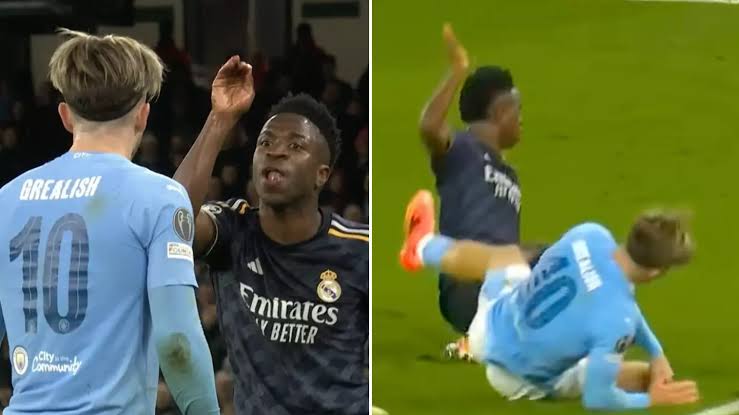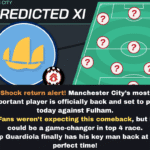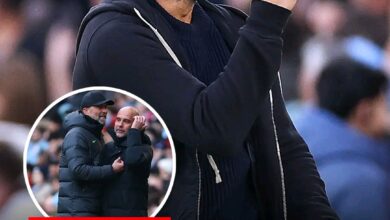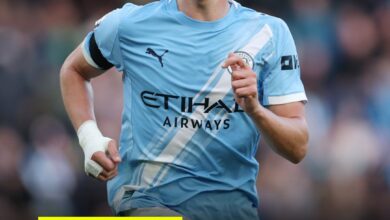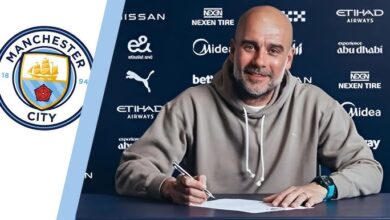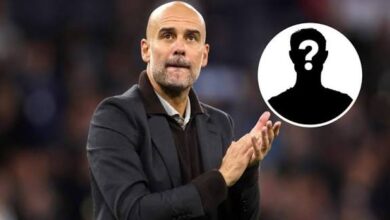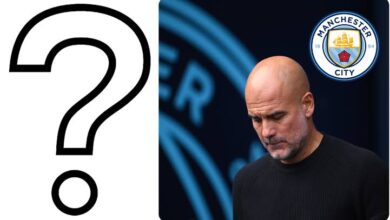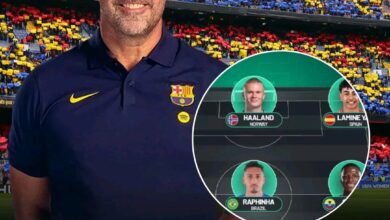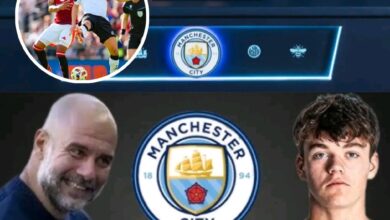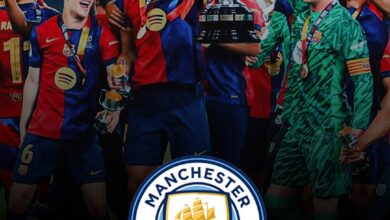Arsenal defender Gabriel Magalhaes got injured in April after clocking sprint speed of around 35kph to catch Adama Traore

The world of professional football is one where split-second decisions and moments of explosive athleticism can define careers, seasons, and legacies. For Arsenal defender Gabriel Magalhães, one such moment in April became a defining chapter in his 2024-25 campaign, illustrating both the physical demands of modern football and the razor-thin margins between success and setback at the highest level.
The scene was set at Craven Cottage during Arsenal’s crucial 2-1 victory over Fulham, a match that would prove pivotal in the Gunners’ season trajectory. As the game unfolded, Gabriel found himself faced with a scenario that every defender dreads yet must confront: the sight of Adama Traore, one of the Premier League’s most explosive wingers, bearing down on goal with the kind of pace that has terrorized defenses across Europe.
What followed was a testament to Gabriel’s commitment and professionalism. The Brazilian center-back, recognizing the imminent threat to his team’s goal, pushed his body to its absolute limits in pursuit of Traore. Speed readings would later reveal that Gabriel had clocked approximately 35 kilometers per hour during this chase—a remarkable feat for a player of his size and position, but one that would come at a devastating personal cost.
The human body, regardless of its conditioning and preparation, has its breaking points. For Gabriel, this moment of maximum exertion proved to be exactly that threshold. The explosive acceleration and sustained high-speed running required to match Traore’s pace placed enormous stress on his hamstring muscles, stress that his body, despite its elite conditioning, could not absorb without consequence.
The injury that occurred was not merely a minor strain or a precautionary concern. Medical assessments would later reveal that Gabriel had suffered significant hamstring damage requiring surgical intervention—a procedure that would effectively end his involvement in Arsenal’s 2024-25 campaign. It was a cruel twist of fate that a moment of such dedication and athletic excellence should result in such a prolonged absence from the sport he loves.
While the immediate cause of Gabriel’s injury was clear—the explosive sprint against Traore—the circumstances leading up to that moment created what could be described as a perfect storm of risk factors. Understanding these contributing elements provides crucial insight into the complex nature of injury prevention and management in modern football.
Gabriel’s recent international commitments with Brazil had taken him thousands of miles away from London, to South America where he had represented his country with typical distinction. However, the physical and logistical demands of international football extend far beyond the ninety minutes spent on the pitch. The travel requirements alone present significant challenges to player conditioning and injury prevention protocols.
The long-haul flight from South America back to London represents one of the most underestimated risk factors in modern football. Spending hours seated in cramped airline conditions, regardless of the class of travel, places the human body under considerable stress. Blood circulation becomes compromised, muscles tighten and shorten, and the body’s natural movement patterns become disrupted. For professional athletes whose bodies are finely tuned machines requiring constant maintenance and optimal conditions, such extended periods of immobility can have profound effects on performance and injury susceptibility.
More significantly, Gabriel had not reached such sprint speeds for several weeks prior to the Fulham encounter. This detail is crucial in understanding why his body was unprepared for the sudden demand placed upon it. In elite sports, the principle of specificity is paramount—the body adapts to the specific demands placed upon it, and when those demands suddenly spike beyond recent conditioning levels, injury risk increases exponentially.
The weeks spent away from Arsenal’s training facilities, while fulfilling important international duties, meant that Gabriel’s body had not been subjected to the kind of high-intensity, match-specific conditioning that would have prepared his hamstring muscles for the explosive demands of that crucial sprint. His muscle fibers, having not been conditioned for such extreme outputs in recent weeks, were essentially asked to perform at a level they were not prepared for
Gabriel’s absence from Arsenal’s lineup represented far more than the loss of a single player—it created a cascade of tactical and strategic challenges that would influence the club’s entire approach to the remainder of the season. As one of Arsenal’s most consistent and reliable defenders, Gabriel’s partnership with William Saliba had become a cornerstone of Mikel Arteta’s defensive philosophy
The Brazilian’s unique skill set extends well beyond traditional defending. His ability to play out from the back with precision and composure had become integral to Arsenal’s possession-based approach. His aerial dominance in both defensive and offensive situations provided the team with a crucial weapon in set-piece scenarios. Most importantly, his leadership qualities and communication skills helped organize the defensive unit and maintain the high defensive line that is so crucial to Arteta’s tactical system.
With Gabriel sidelined, Arsenal was forced to reconfigure their defensive approach significantly. Jakub Kiwior and Cristhian Mosquera were called upon to fill the void alongside the reliable Saliba, but replacing Gabriel’s specific attributes and understanding of Arteta’s system proved to be a complex challenge. While both players possess quality and potential, the loss of Gabriel’s experience and established partnerships created vulnerabilities that opposing teams were quick to identify and exploit.
The impact extended beyond purely defensive considerations. Gabriel’s absence affected Arsenal’s distribution from the back, their set-piece effectiveness, and the overall balance of the team. His injury came at a particularly crucial juncture in the season, with Arsenal competing on multiple fronts and requiring consistency of selection to maintain their tactical cohesion and momentum.
Perhaps most frustratingly for Arsenal supporters and management alike, Gabriel’s absence was felt most acutely during the Champions League semi-final against Paris Saint-Germain. The tie represented Arsenal’s biggest European opportunity in years, and the absence of such a key defender undoubtedly influenced both the tactical preparation and the on-field execution. While football is ultimately a team sport where individual absences should be manageable, certain players possess such specific qualities and importance to a team’s system that their absence creates ripple effects throughout the entire tactical structure.
The decision to proceed with surgical intervention for Gabriel’s hamstring injury highlighted the severity of the damage sustained during that sprint against Traore. Hamstring surgery, while becoming increasingly sophisticated and successful, represents a significant medical undertaking that requires careful consideration of multiple factors.
Modern sports medicine has revolutionized the approach to hamstring injuries, moving away from purely conservative treatment approaches toward more aggressive interventions when warranted. The decision to operate on Gabriel’s injury would have been made only after extensive consultation between Arsenal’s medical team, independent specialists, and the player himself, weighing the potential benefits of surgical intervention against the inherent risks and extended recovery timeline.
The surgical procedure itself would have involved detailed reconstruction or repair of the damaged muscle fibers and surrounding tissue. Modern techniques focus not only on repairing the immediate damage but also on strengthening the entire muscle group to prevent future recurrence. This comprehensive approach recognizes that hamstring injuries, if not properly addressed, have a high tendency to recur and can become chronic issues that plague players throughout their careers.
The rehabilitation process following hamstring surgery is both physically and mentally demanding, requiring months of carefully structured recovery protocols. The initial phase focuses on healing and inflammation reduction, followed by gradual reintroduction of movement and flexibility work. Strength training is then systematically progressed, with particular attention paid to eccentric strengthening—the type of muscle contraction that occurs when muscles lengthen under tension, precisely the mechanism that was compromised during Gabriel’s sprint.
Throughout this process, Gabriel would have worked closely with Arsenal’s world-class medical and fitness teams, utilizing cutting-edge recovery technologies and methodologies. The psychological aspect of such a long-term injury cannot be understated, particularly for a player in the prime of his career who suddenly finds himself unable to contribute to his team’s success on the field.
Gabriel’s absence from Arsenal’s pre-season tour of Asia represented both a disappointment and a necessary precaution in his recovery journey. Pre-season tours, while excellent for team building and commercial purposes, present unique challenges for players returning from significant injuries. The travel demands, unfamiliar training facilities, and compressed schedule of matches can create additional stress on recovering players.
The decision to keep Gabriel in London during the Asian tour demonstrated Arsenal’s commitment to prioritizing his long-term fitness over short-term commercial considerations. This approach, while disappointing for fans hoping to see their star defender in action, reflected the club’s understanding that rushing his return could result in setbacks that might compromise his entire upcoming season.
The fact that Gabriel felt a niggle during training prior to the tour departure highlighted just how delicate the recovery process can be. Even months after the initial injury and surgery, the affected area remained sensitive and required constant monitoring. This sensitivity is typical of significant hamstring injuries and reinforces why such a cautious approach was necessary.
Missing the high-profile friendlies against AC Milan, Newcastle United, and Tottenham Hotspur represented significant lost opportunities for Gabriel to regain match fitness and rhythm. These matches, while technically friendlies, provide crucial preparation for the demands of competitive football. The absence of match action meant that Gabriel’s return to full competitive fitness would need to be managed even more carefully once he did resume training.
However, the behind-closed-doors friendly against Watford at London Colney on July 19 marked a crucial milestone in Gabriel’s recovery journey. Playing 45 minutes in this controlled environment allowed the medical team to assess his response to match conditions while minimizing external pressures and media scrutiny. This graduated return to action represents best practice in injury management, allowing for careful monitoring of the player’s physical and psychological response to competitive demands.
Gabriel’s extended absence provided both challenges and opportunities for Arsenal’s squad development. While losing such a crucial player was undoubtedly detrimental, it also created opportunities for other defenders to step up and prove their worth at the highest level.
Jakub Kiwior, the Polish international who had shown promise in limited opportunities, found himself thrust into a more prominent role. This increased responsibility provided valuable experience and allowed Arteta to assess whether Kiwior could develop into a long-term solution for Arsenal’s defensive needs. His performances during Gabriel’s absence would likely influence future transfer planning and squad construction decisions.
Similarly, Cristhian Mosquera’s partnership with Saliba offered insights into Arsenal’s defensive depth and the potential tactical variations available to Arteta. These extended opportunities to play alongside established players like Saliba provided invaluable experience that could prove crucial in future seasons.
The injury also highlighted the importance of squad depth in modern football. Arsenal’s ability to maintain competitive performance levels despite losing such a key player demonstrated both the quality of the replacement options and the robustness of Arteta’s tactical system. However, it also exposed potential vulnerabilities that could be addressed through future recruitment or development of existing players.
Gabriel’s journey through injury and recovery offers valuable lessons for both Arsenal and the broader football community about injury prevention and player management in the modern game. The circumstances leading to his injury—international travel, extended periods away from club training, and sudden exposure to high-intensity demands—represent common risk factors that affect players throughout professional football.
The experience reinforces the importance of individualized training programs that account for players’ recent activity levels, travel schedules, and specific physical conditioning needs. Modern sports science continues to evolve in understanding how to optimize player availability while maintaining competitive performance levels.
Communication between club and country regarding player management becomes increasingly crucial as the football calendar continues to expand. The demands placed on top players, who regularly represent both club and country while competing in multiple tournaments throughout the year, require sophisticated management strategies to minimize injury risk.
Gabriel’s case also highlights the psychological resilience required to overcome significant injuries. The mental strength needed to commit fully to rehabilitation while watching teammates compete at the highest level cannot be understated. His positive approach to recovery and determination to return stronger demonstrates the mentality that separates elite athletes from their peers.
Mikel Arteta’s confidence that Gabriel will be available for Arsenal’s Premier League opener against Manchester United at Old Trafford on April 17 represents both optimism and careful medical planning. This timeline suggests that the rehabilitation process has progressed according to expectations and that Gabriel’s return to full competitive fitness is well-coordinated with the club’s medical protocols.
The significance of returning for such a high-profile fixture cannot be overstated. Manchester United away represents one of the most challenging fixtures in the Premier League calendar, and having Gabriel available for such an encounter would provide both tactical flexibility and psychological confidence for the entire squad.
However, the management of his return will require continued careful consideration. Match fitness differs significantly from training fitness, and the step up to Premier League intensity after such an extended absence will need to be managed progressively. Arsenal’s medical team will likely monitor his response to training loads and potentially plan for a gradual increase in playing time to ensure sustainable performance levels.
Gabriel Magalhães’ injury story serves as a compelling reminder of the fine margins that exist in elite sport. A moment of supreme athletic commitment and tactical awareness resulted in months of frustration and rehabilitation, highlighting both the demands of modern football and the resilience required to compete at the highest level.
The Brazilian’s experience illustrates the complex interplay of factors that contribute to injury risk in professional football—from international travel demands to training load management, from tactical requirements to individual physical preparation. His journey through diagnosis, surgery, and rehabilitation demonstrates the sophisticated medical support available to modern players while also highlighting the patience and mental strength required to overcome significant setbacks.
As Gabriel prepares for his return to competitive action, his experience offers valuable insights for player management, injury prevention, and the ongoing evolution of sports medicine in professional football. His story reminds us that behind every moment of athletic brilliance lies the potential for setback, but also the human capacity for recovery, adaptation, and renewed excellence.
The commitment Gabriel showed in chasing Adama Traore at 35 kilometers per hour ultimately cost him months of his career, but it also exemplified the dedication and sacrifice that define elite professional sport. As he prepares to return to action, that same commitment will undoubtedly drive his determination to reach even greater heights in the seasons to come.


